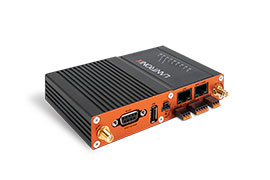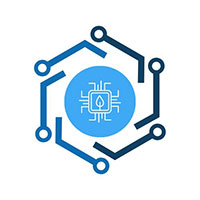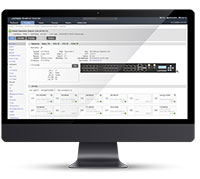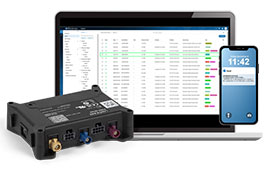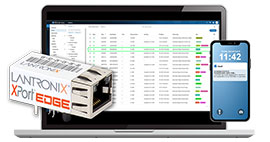Fast Ethernet Tutorial
A Guide to Using Fast Ethernet and Gigabit Ethernet
Network managers today must contend with the requirements of utilizing faster media, mounting bandwidth and play “traffic cop” to an ever-growing network infrastructure. Now, more than ever, it’s imperative for them to understand the basics of using various Ethernet technologies to manage their networks.
This tutorial will explain the basic principles of Fast Ethernet and Gigabit Ethernet technologies, describing how each improves on basic Ethernet technology. It will offer guidance on how to implement these technologies as well as some “rules of the road” for successful repeater selection and usage.
Introduction to Ethernet, Fast Ethernet and Gigabit Ethernet
It is nearly impossible to discuss networking without the mention of Ethernet, Fast Ethernet and Gigabit Ethernet. But, in order to determine which form is needed for your application, it’s important to first understand what each provides and how they work together.
A good starting point is to explain what Ethernet is. Simply, Ethernet is a very common method of networking computers in a LAN using copper cabling. Capable of providing fast and constant connections, Ethernet can handle about 10,000,000 bits per second and can be used with almost any kind of computer.
While that may sound fast to those less familiar with networking, there is a very strong demand for even higher transmission speeds, which has been realized by the Fast Ethernet and Gigabit Ethernet specifications (IEEE 802.3u and IEEE 802.3z respectively). These LAN (local area network) standards have raised the Ethernet speed limit from 10 megabits per second (Mbps) to 100Mbps for Fast Ethernet and 1000Mbps for Gigabit Ethernet with only minimal changes made to the existing cable structure.
The building blocks of today’s networks call out for a mixture of legacy 10BASE-T Ethernet networks and the new protocols. Typically, 10Mbps networks utilize Ethernet switches to improve the overall efficiency of the Ethernet network. Between Ethernet switches, Fast Ethernet repeaters are used to connect a group of switches together at the higher 100 Mbps rate.
However, with an increasing number of users running 100Mbps at the desktop, servers and aggregation points such as switch stacks may require even greater bandwidth. In this case, a Fast Ethernet backbone switch can be upgraded to a Gigabit Ethernet switch which supports multiple 100/1000 Mbps switches. High performance servers can be connected directly to the backbone once it has been upgraded.
Integrating Fast Ethernet and Gigabit Ethernet
Many client/server networks suffer from too many clients trying to access the same server, which creates a bottleneck where the server attaches to the LAN. Fast Ethernet, in combination with switched Ethernet, can create an optimal cost-effective solution for avoiding slow networks since most 10/100Mbps components cost about the same as 10Mbps-only devices.
When integrating 100BASE-T into a 10BASE-T network, the only change required from a wiring standpoint is that the corporate premise distributed wiring system must now include Category 5 (CAT5) rated twisted pair cable in the areas running 100BASE-T. Once rewiring is completed, gigabit speeds can also be deployed even more widely throughout the network using standard CAT5 cabling.
The Fast Ethernet specification calls for two types of transmission schemes over various wire media. The first is 100BASE-TX, which, from a cabling perspective, is very similar to 10BASE-T. It uses CAT5-rated twisted pair copper cable to connect various hubs, switches and end-nodes. It also uses an RJ45 jack just like 10BASE-T and the wiring at the connector is identical. These similarities make 100BASE-TX easier to install and therefore the most popular form of the Fast Ethernet specification.
The second variation is 100Base-FX which is used primarily to connect hubs and switches together either between wiring closets or between buildings. 100BASE-FX uses multimode fiber-optic cable to transport Fast Ethernet traffic.
Gigabit Ethernet specification calls for three types of transmission schemes over various wire media. Gigabit Ethernet was originally designed as a switched technology and used fiber for uplinks and connections between buildings. Because of this, in June 1998 the IEEE approved the Gigabit Ethernet standard over fiber: 1000BASE-LX and 1000BASE-SX.
The next Gigabit Ethernet standardization to come was 1000BASE-T, which is Gigabit Ethernet over copper. This standard allows one gigabit per second (Gbps) speeds to be transmitted over CAT5 cable and has made Gigabit Ethernet migration easier and more cost-effective than ever before.
Rules of the Road
The basic building block for the Fast Ethernet LAN is the Fast Ethernet repeater. The two types of Fast Ethernet repeaters offered on the market today are:
Class I Repeater — The Class 1 repeater operates by translating line signals on the incoming port to a digital signal. This allows the translation between different types of Fast Ethernet such as 100BASE-TX and 100BASE-FX. A Class I repeater introduces delays when performing this conversion such that only one repeater can be put in a single Fast Ethernet LAN segment.
Class II Repeater — The Class II repeater immediately repeats the signal on an incoming port to all the ports on the repeater. Very little delay is introduced by this quick movement of data across the repeater; thus two Class II repeaters are allowed per Fast Ethernet segment.
Network managers understand the 100 meter distance limitation of 10BASE-T and 100BASE-T Ethernet and make allowances for working within these limitations. At the higher operating speeds, Fast Ethernet and 1000BASE-T are limited to 100 meters over CAT5-rated cable. The EIA/TIA cabling standard recommends using no more than 90 meters between the equipment in the wiring closet and the wall connector. This allows another 10 meters for patch cables between the wall and the desktop computer.
In contrast, a Fast Ethernet network using the 100BASE-FX standard is designed to allow LAN segments up to 412 meters in length. Even though fiber-optic cable can actually transmit data greater distances (i.e. 2 Kilometers in FDDI), the 412 meter limit for Fast Ethernet was created to allow for the round trip times of packet transmission. Typical 100BASE-FX cable specifications call for multimode fiber-optic cable with a 62.5 micron fiber-optic core and a 125 micron cladding around the outside. This is the most popular fiber optic cable type used by many of the LAN standards today. Connectors for 100BASE-FX Fast Ethernet are typically ST connectors (which look like Ethernet BNC connectors).
Many Fast Ethernet vendors are migrating to the newer SC connectors used for ATM over fiber. A rough implementation guideline to use when determining the maximum distances in a Fast Ethernet network is the equation: 400 – (r x 95) where r is the number of repeaters. Network managers need to take into account the distance between the repeaters and the distance between each node from the repeater. For example, in Figure 1 two repeaters are connected to two Fast Ethernet switches and a few servers.
Figure 1: Fast Ethernet Distance Calculations with Two Repeaters
Maximum Distance Between End nodes:
400-(rx95) where r = 2 (for 2 repeaters)
400-(2×95) = 400-190 = 210 feet, thus
A + B + C = 210 Feet
There is yet another variation of Ethernet called full-duplex Ethernet. Full-duplex Ethernet enables the connection speed to be doubled by simply adding another pair of wires and removing collision detection; the Fast Ethernet standard allowed full-duplex Ethernet. Until then all Ethernet worked in half-duplex mode which meant if there were only two stations on a segment, both could not transmit simultaneously. With full-duplex operation, this was now possible. In the terms of Fast Ethernet, essentially 200Mbps of throughput is the theoretical maximum per full-duplex Fast Ethernet connection. This type of connection is limited to a node-to-node connection and is typically used to link two Ethernet switches together.
A Gigabit Ethernet network using the 1000BASE-LX long wavelength option supports duplex links of up to 550 meters of 62.5 millimeters or 50 millimeters multimode fiber. 1000BASE-LX can also support up to 5 Kilometers of 10 millimeter single-mode fiber. Its wavelengths range from 1270 millimeters to 1355 millimeters. The 1000BASE-SX is a short wavelength option that supports duplex links of up to 275 meters using 62.5 millimeters at multimode or up to 550 meters using 55 millimeters of multimode fiber. Typical wavelengths for this option are in the range of 770 to 860 nanometers.
Maintaining a Quality Network
The CAT5 cable specification is rated up to 100 megahertz (MHz) and meets the requirement for high speed LAN technologies like Fast Ethernet and Gigabit Ethernet. The EIA/TIA (Electronics industry Association/Telecommunications Industry Association) formed this cable standard which describes performance the LAN manager can expect from a strand of twisted pair copper cable. Along with this specification, the committee formed the EIA/TIA-568 standard named the “Commercial Building Telecommunications Cabling Standard” to help network managers install a cabling system that would operate using common LAN types (like Fast Ethernet). The specification defines Near End Crosstalk (NEXT) and attenuation limits between connectors in a wall plate to the equipment in the closet. Cable analyzers can be used to ensure accordance with this specification and thus guarantee a functional Fast Ethernet or Gigabit Ethernet network.
The basic strategy of cabling Fast Ethernet systems is to minimize the re-transmission of packets caused by high bit-error rates. This ratio is calculated using NEXT, ambient noise and attenuation of the cable.
Fast Ethernet Migration
Most network managers have already migrated from 10BASE-T or other Ethernet 10Mbps variations to higher bandwidth networks. Fast Ethernet ports on Ethernet switches are used to provide even greater bandwidth between the workgroups at 100Mbps speeds. New backbone switches have been created to offer support for 1000Mbps Gigabit Ethernet uplinks to handle network traffic. Equipment like Fast Ethernet repeaters will be used in common areas to group Ethernet switches together with server farms into large 100Mbps pipes. This is currently the most cost effective method of growing networks within the average enterprise.
